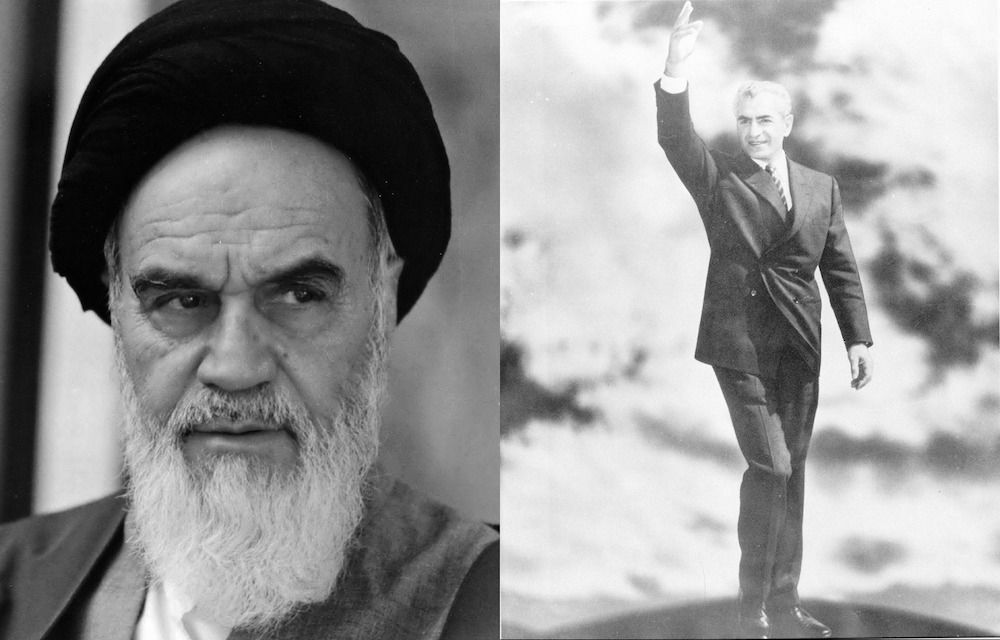State policies as combinatorial algebra

There are moments in history when policy reversals seem so neat at first glance that can be described as simple combinations of vectorial repertoires. With some disturbing constants, though.
In this example I consider Iranian state policy governing the apperance of women’s heads as decreed first by the Shah in 1936 and then by Khomeini in 1979.
The first vector contains the constant elements, the matrix contains the different policies, one in each column.
constants <- structure(
c("In",
",",
" of Iran",
" the Islamic veil. This move was welcome by the",
" class. To enforce this decree, the police were ordered to physically",
" the veil",
" any woman who",
" it in public. Women were beaten, their headscarves and chadors",
" and their homes forcibly searched"), .Dim = c(9L, 1L))
policy <- structure(
c("1936", "1979",
"Reza Shah Pahlavi", "Imam Khomeini",
"banned", "made mandatory",
"Westernized upper", "religious lower",
"remove", "impose",
"from ", "onto",
"wore", "did not wear",
"torn off,", "slapped on,",
".","."), .Dim = c(2L, 9L))
Iran36 <- paste(t(constants),policy[1,])
Iran79 <- paste(t(constants),policy[2,])
message("Iranian state policy about women I:")
message(Iran36)
message("Iranian state policy about women II:")
message(Iran79)A succinct description of Iranian state policies towards women in 1936 and 1979 are generated by a simple row-by-column combination of the constant vector with the policy matrix. Running the simple script in R will result in the kind of narrative one can find for example on the respective Wikipedia pages:
Iranian state policy about women I:
In 1936, Reza Shah Pahlavi of Iran banned the Islamic veil. This move was welcome by the Westernized upper class. To enforce this decree, the police were ordered to physically remove the veil from any woman who wore it in public. Women were beaten, their headscarves and chadors torn off, and their homes forcibly searched.
As opposed to
Iranian state policy about women II:
In 1979, Imam Khomeini of Iran made mandatory the Islamic veil. This move was welcome by the religious lower class. To enforce this decree, the police were ordered to physically impose the veil onto any woman who did not wear it in public. Women were beaten, their headscarves and chadors slapped on, and their homes forcibly searched.
Please note that “women were beaten” is sadly part of the constant component, irrespective of the opposite policies and regimes enforcing them. Quite naturally, both adamantly claimed to act in the best interest of women.
Cover photo credits:
The Shah Mohammad Reza Pahlavi greeting the people – advertising his White Revolution as a step towards modernisation, photograph from 1963 – Wikimedia
Imam Ruhollah Khomeini in 1981, by Mohammad Sayyad — Wikimedia



